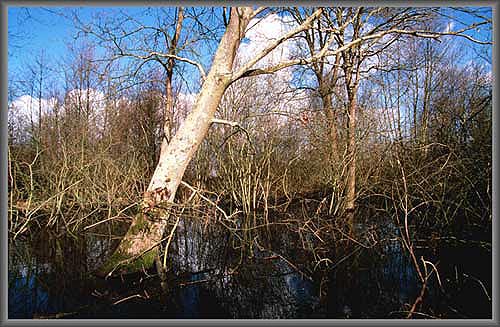After the lacustral basin dried out completely, in the second half of the XIX century it became an agricultural centre and assumed the typical Luccan method of 4,000 square metre "patchworks" delimited by drainage ditches or rows of Poplars, Willows, Elms and even Vines. However, extensive areas, subject to occasional flooding, remained as wet meadows for growing forage crops or used for grazing.
With the arrival of mechanisation in agriculture, the landscape changed: the rows of trees and hedgerows disappeared, plots of land grew larger and the traditional crops were replaced by mono-cultures of maize.
The increasing use of pesticides further contributed to the impoverishment of the agro-ecosystem.
As it fell within the boundaries of the artificial flood-plain, "Il Bottaccio" was never used for agriculture and was left in semi-natural conditions.
Productivity was limited to selviculture, the English Oak stands were managed as high forest and the elms as coppices; the wet meadows were periodically scythed.
The meadows were last reaped in the mid 80's.




